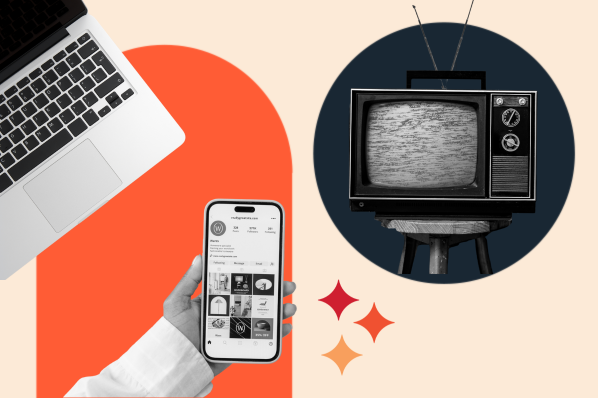The movie follows the “life” of Andrew, a robot purchased to do household chores, only to realize he can do far more and wants to become human.
Obviously, this is extreme. I don’t think ChatGPT will be going before Congress to ask for human rights like Andrew anytime soon.
But with AI a topic of daily conversation, this imaginative marketer can’t help but wonder about all the possibilities it holds, professionally and personally.
Last year, Pew Research found 55% of Americans use AI at least once a day.
IBM found that 42% of enterprises also use AI once a day, and an additional 40% are exploring how to incorporate it into their workflows. AI media planning is undoubtedly an area ripe with opportunity.
Why Use AI for Media Planning
Well, why do we use AI for anything?
A Forbes Advisor survey reports that 64% of businesses believe artificial intelligence can help increase their productivity — and AI media planning is no exception.
Using AI in media planning has many benefits, all of which lead to better overall productivity.
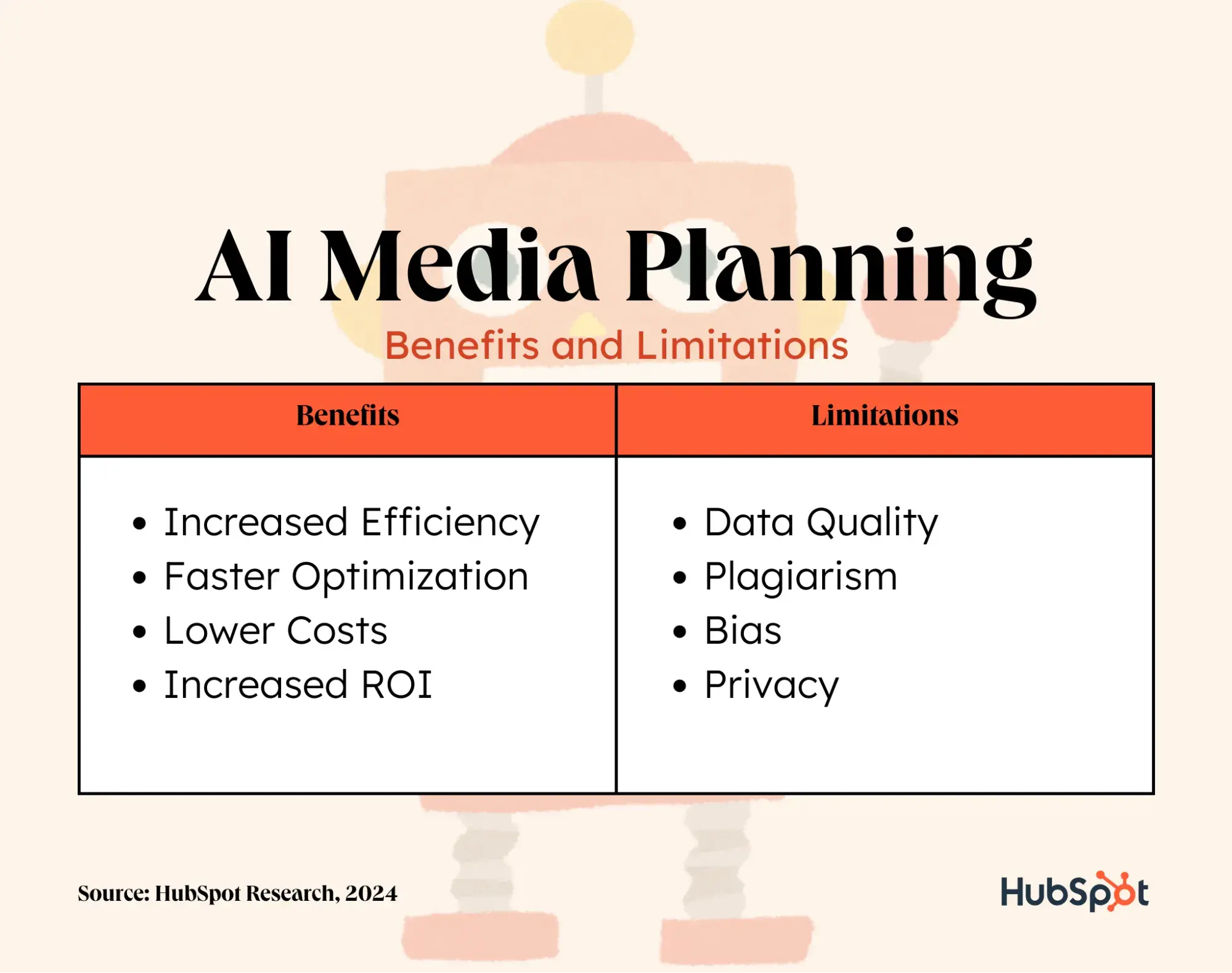
Benefits of AI Media Planning
Increased Efficiency
Have you ever asked a chatbot a question? How long did it take to respond? In most cases, I’m guessing less than a minute. AI can process requests, analyze data, and respond faster than any human.
It’s no surprise that according to HubSpot research, 90% of marketers say AI and automation help them spend less time on manual tasks, more time on the parts of their job they enjoy most (80%), and more time on the creative aspects of their role (79%).
For media planners, this can mean quicker market and campaign analysis — two things I’ve found to be notoriously time-consuming.
Faster Optimization
AI algorithms adapt based on the information they have. For example, if you input or grant access to your media campaign performance data, the AI tool should adjust its output to deliver optimal results with the click of a button.
Lower Costs
Thanks to its increased efficiency, faster strategic optimization, and proficiency with smaller tasks, AI can minimize unnecessary expenses in your media planning budgets.
For example, if you’re paying a freelancer by the hour to copy-edit your ads, using an AI tool like Grammarly can help cut or eliminate the need for those hours.
When working with a limited budget or lean team (like many of my old clients), these small savings can make a big difference.
Increased ROI
This likely goes without explanation, but when you spend less, you automatically increase your return on investment. What business doesn’t want that?
Limitations of AI Media Planning
Now, let’s look at the other end of things. As great as AI sounds for media planning, it still has drawbacks.
Data Quality
Data quality is the most significant concern with any use of AI. Artificial intelligence typically runs off information fed from its users and the internet — and, let’s be real, there’s a lot of bad content out there.
Knowing this, you can’t always know if the results you get from AI are sound or based on reliable sources. This can be dangerous when using AI for market or platform research in media planning.
Plagiarism
Compiling information from many sources comes with the risk of plagiarism.
AI-created content is inherently derivative — based on things that already exist. So, there’s always the possibility that your results may be similar to what’s already out there or even those delivered to another user.
Imagine running a Facebook Ad with the same headline or image as your competitor … not the best look.
Bias
As my teammate and senior marketing manager at HubSpot, Flori Needle, explains, “AI is biased because society is biased.”
“Since society is biased, much of the data AI is trained on contains society’s biases and prejudices…For example, an image generator asked to create an image of a CEO might produce images of white males because of the historical bias in employment in the data it learned from.”
Unfortunately, this is something I uncovered first-hand.

And bias is so prevalent that even Google had to halt human depictions in its AI Gemini.
Stereotypes and bias are most definitely not things you want in your creative. So be wary.
Privacy
As we mentioned earlier, AI learns from anything typed into it. While AI can genuinely help expedite your work, you must often share detailed information to produce worthwhile results, and AI is currently unregulated.
That means there is no guarantee your shared information won’t be passed on to others — maybe even your competitors.
How to Use AI for Media Planning
So, now that you know the pros and cons, what are some practical and powerful ways you can use AI for media planning?
Best AI Media Planning Tactics & Methods
1. Fix spreadsheet formulas (e.g., Budgets).
As a principal marketing manager on our Integrated Marketing Campaigns here at HubSpot, my teammate Basha Coleman is no stranger to media planning. One way she uses AI to improve her workflow is with spreadsheets.
“I use AI to solve small problems like fixing spreadsheet formulas that aren’t working,” she shared.
“Rather than spending 30 minutes to an hour looking up and understanding how a spreadsheet formula works, I can get the solution from Chat GPT, then go back and learn the fundamentals of why that solution worked when I have time.”
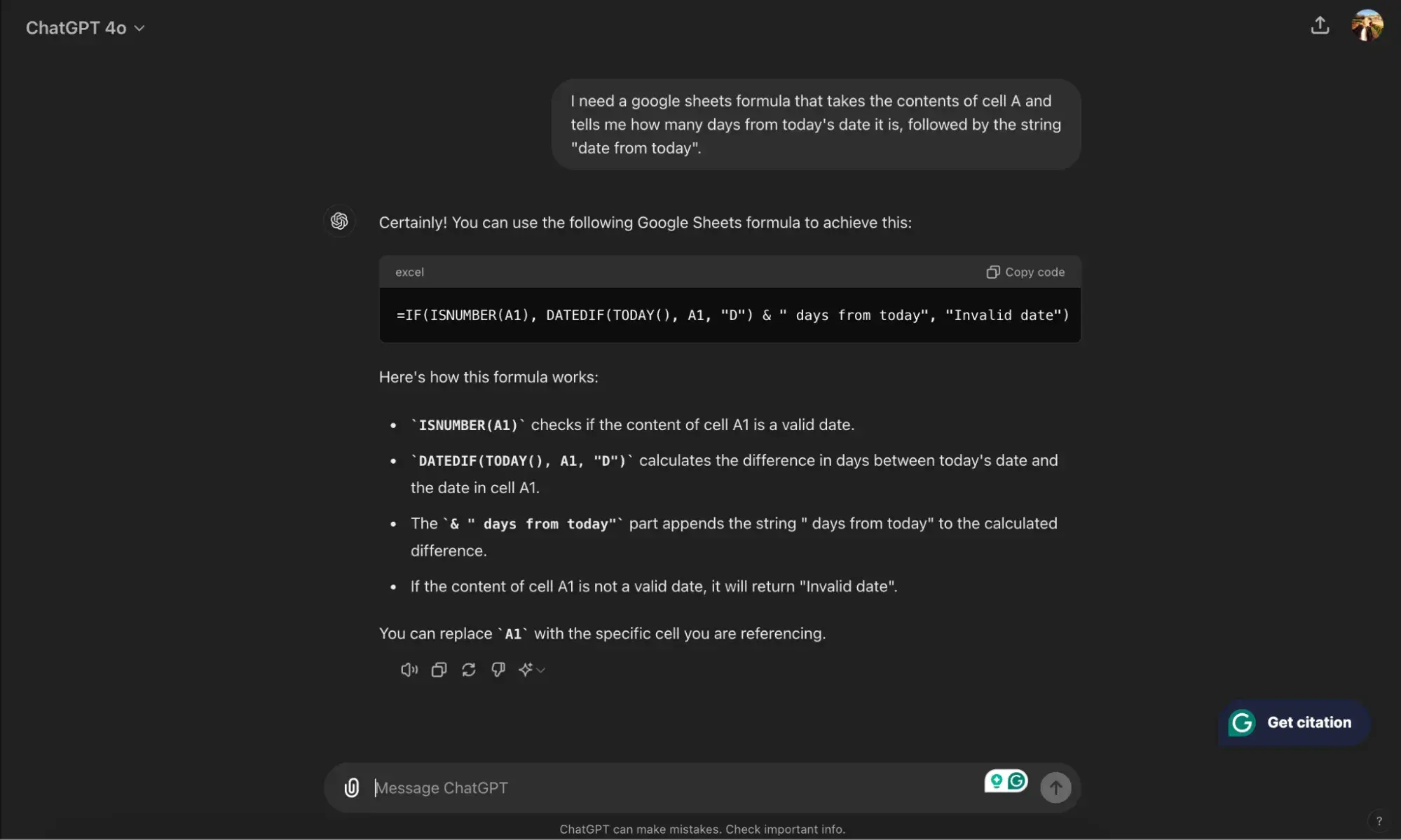
This little hack can be a huge time saver for media planners working through budget spreadsheets or calculating performance stats.
Pro tip: Ajelix offers a host of AI and business intelligence tools to help you get more out of your data and spreadsheets. If prompting ChatGPT is not your strong suit, this specialized suite may fit the bill, and they have a free plan to get you started.
2. Complete campaign research.
AI can also be beneficial for distilling information during campaign research.
Coleman continued, “If I want to find inspiration for an integrated campaign, I can ask a generative AI tool about the top 10 media platforms in B2B and tweak my query until I get the inspiration I'm looking for.”
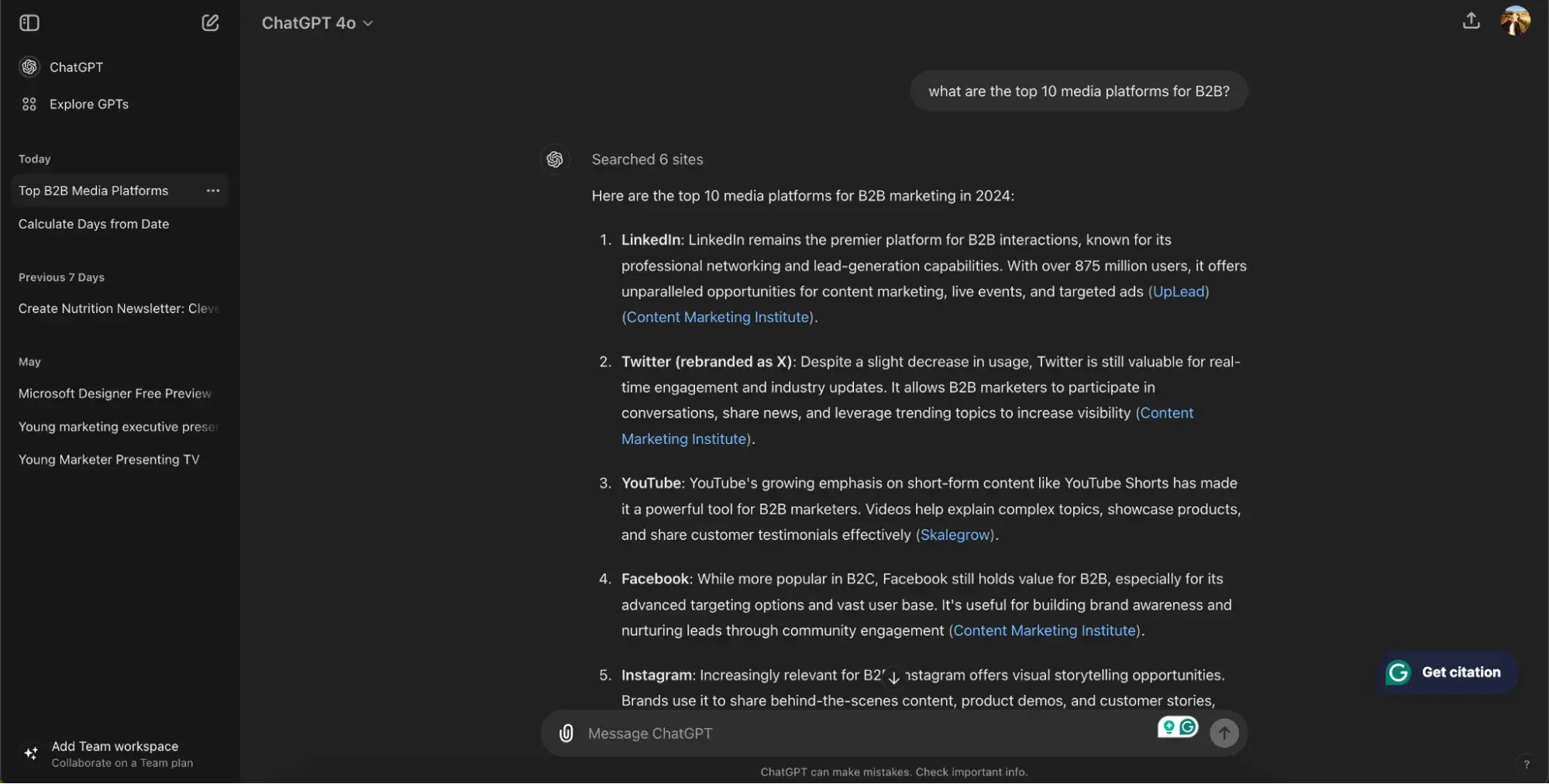
Working with an AI tool instead of a search engine to gather information can make it easier to answer specific queries. There is no need to click through multiple pages to find what you’re looking for; AI does that for you.
Pro tip: Sharing details or performance results from your previous campaigns can help artificial intelligence tools generate more personalized and informed results. When working with these tools, create a spreadsheet with performance data and campaign overviews to upload.
3. Suggest platforms and placement based on data.
Facebook, Instagram, Spotify, Retargeting, Google PPC. With so many ad or media placement options, it can be challenging to decide which are worth your time and money.
It’s always smart to lean into data, and AI can help you analyze that data for faster conclusions. Some may even make specific recommendations.
Upload your spreadsheet to ChatGPT and give it a shot. If you’re running ads through your HubSpot Portal, use ChatSpot.
Pro tip: If you’re not the strongest prompter, there are AI media planning tools built to handle these specific types of queries. Take ReBid’s AI assistant, for example:
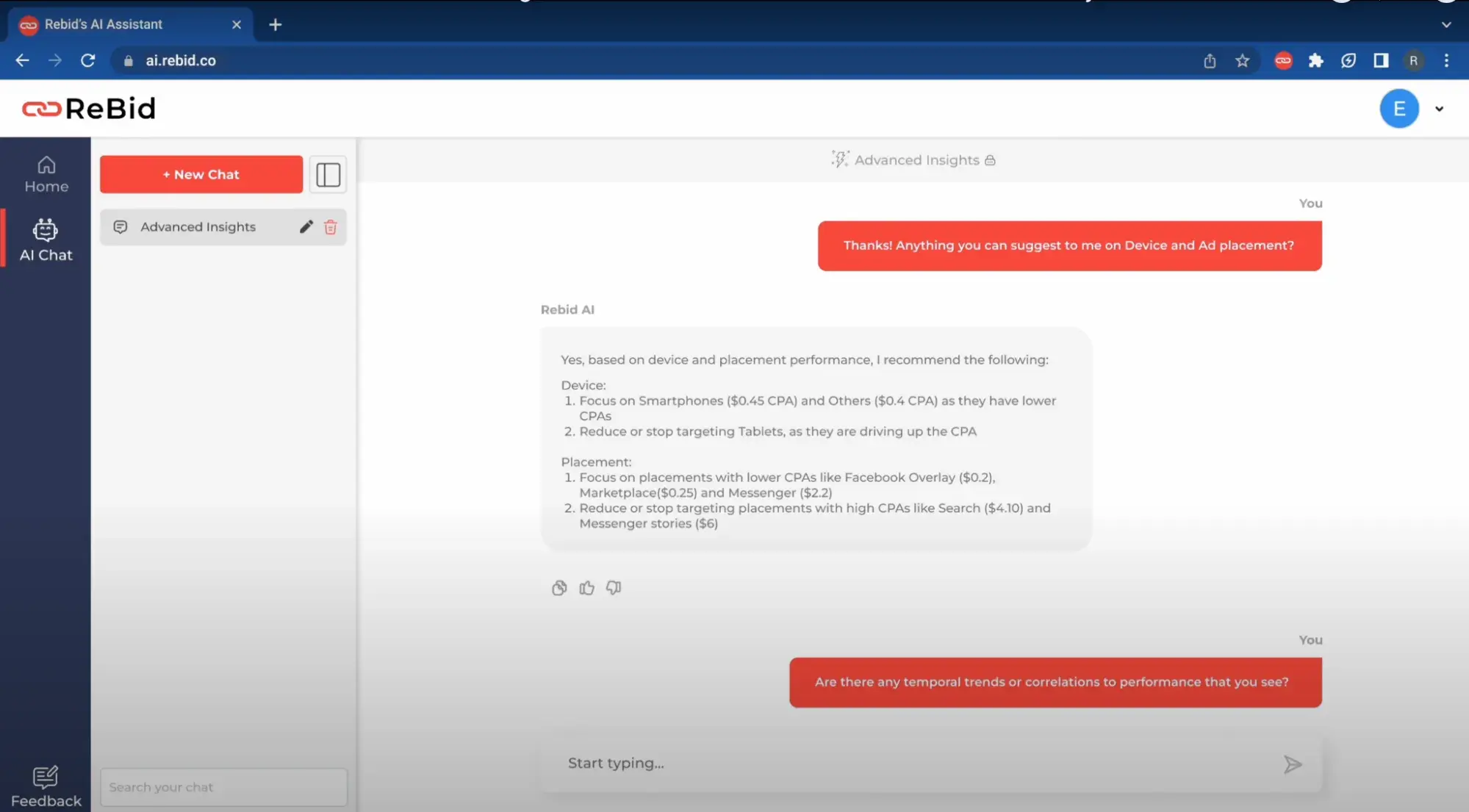
When asked for ad placement suggestions, the assistant tells you the type of device, ad, and even platforms to focus on based on the provided data. Use the tools to get suggestions on targeting and overall strategy as well.
4. Get inspiration for copy.
Are you working on ad copy? Writing is one of the most popular use cases for AI, even though the content isn’t complete enough to publish as-is 96% of the time.
(Confession: I could’ve told you that even without the report.)
As a content marketer with a decade of experience, I would never suggest simply copying and pasting the first content a tool gives you, but you can certainly use it to:
- Get rough drafts for social media captions
- Brainstorm headlines for ads
- Draft outreach emails
Use these results as a jumping-off point. Take what the tool gives you and set aside time to shape it into your final product with your brand’s specific voice and personality.
Pro tip: Campaign Assistant is our free AI-powered app that can help you generate ad copy for Google, Facebook, and LinkedIn using simple prompts. HubSpot’s Free AI Content Generator can help you with emails and landing pages.

5. Create original images for ads.
Speaking of ad creative, AI can help media planners generate high-quality original images and video in less than a minute — just from a text description.
Some of my favorite AI image generators include:
You can use these assets in social media ads, traditional print, and emails.
Pro tip: Along with your prompt, give the tool you use an example of an image or visual you like. The more detail you can provide the quicker you will get the desired results.
Many tools, like Firefly, allow you to upload “references,” but even if they don’t, you can likely share links to be analyzed.
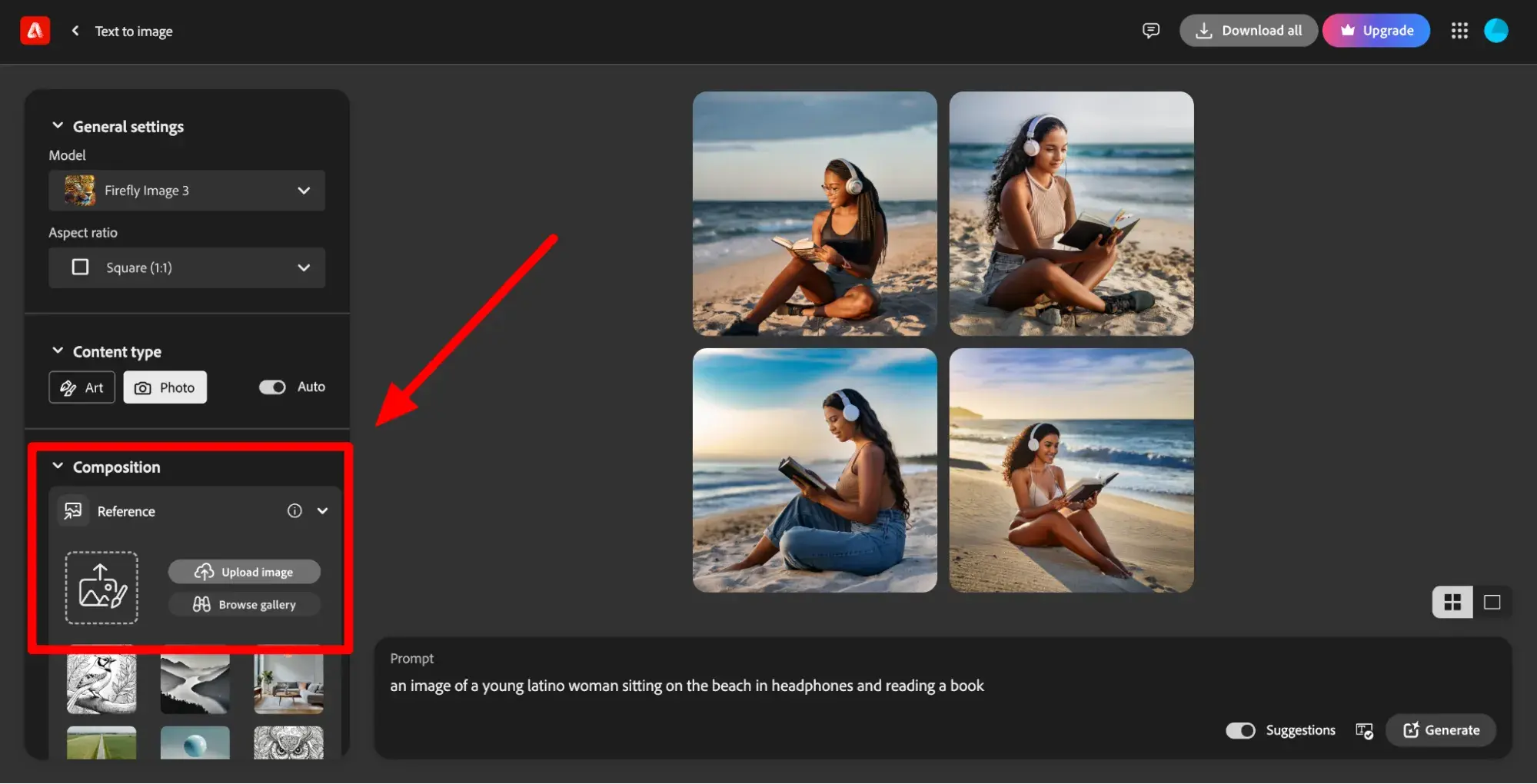
6. Personalize your content.
Now, the AI we’re talking about here is more about algorithms and automation than generation, but it’s just as impactful.
According to Deloitte Digital, brands that lead the way in personalization outperform those that don’t by at least 20% in conversion rates, customer engagement, and average order value.
And who’s surprised? People are wired to respond to their names. I don’t know about you, but I love getting new music recommendations on Spotify based on what I like.
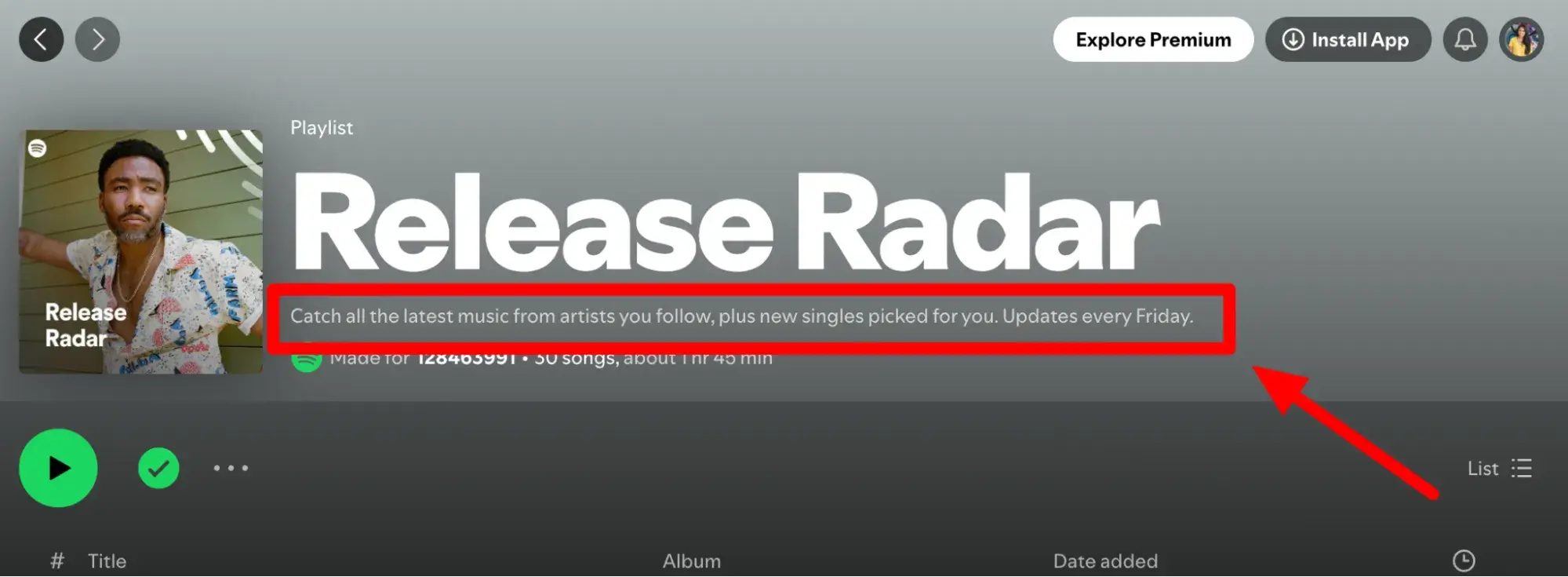
AI can help you create a similarly delightful experience with your advertising and media by incorporating content personalization.
What does this look like for media planners? Address audience members by name or create ads targeted to specific interests, previous activity, location, and other personal traits.
If you’re a HubSpot user, you can use the platform’s personalization tokens to add information from the CRM to your website pages, landing pages, and marketing emails.

The point is to take what you know about your target audience and think of subtle ways to incorporate that into your media to make it more relevant, valuable, and effective.
Pro tip: Be mindful of data privacy. While people love personalized experiences, they also don’t want to freak out, wondering how you learned their favorite midnight snack is Oreos and peanut butter.
Personalization is a delicate balance between thoughtful and creepy. Only make use of data that is public or shared with you directly.
The best media planners are (em)powered by AI.
Today, there is a lot of chatter about jobs at risk due to AI. Perhaps the AI media planning tips we shared in this article also make you a bit nervous, but they don’t have to.
AI is a whiz at data processing, but it lacks your human experience, emotion, and unique perspective. Rather than resisting or being wary of AI in media planning, embrace it.
Take these six tips and see how you can use AI to your advantage to expedite your workflow and overall be a more effective media planner.
Media Planning


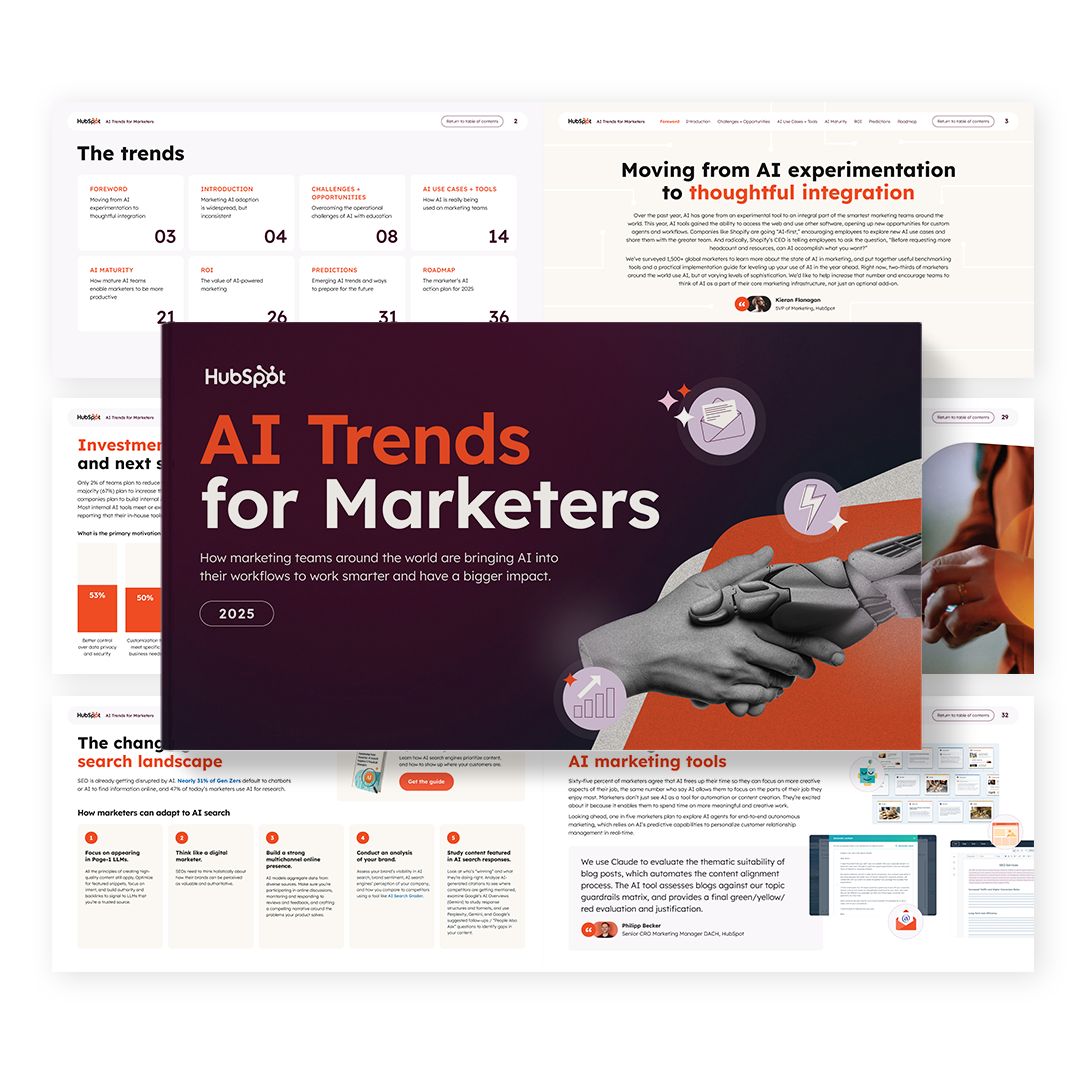
.png?height=613&width=1920)


![13 Media Planning Tools I Tried & What Worked Best [+ Free Template]](https://53.fs1.hubspotusercontent-na1.net/hubfs/53/media-planning-tools-1-20250304-7834338.webp)
![Media Mix Modeling: What It Is and How to Use It [+ Examples]](https://53.fs1.hubspotusercontent-na1.net/hubfs/53/media-mix-modeling-1-20250216-2505933.webp)
![What Is a Media Mix & The Most Effective Types [HubSpot Blog Data]](https://53.fs1.hubspotusercontent-na1.net/hubfs/53/media-mix-1-20250116-9700154.webp)
![Media Buying 101: What It Is and How It Works [+ 14 Platforms to Use]](https://53.fs1.hubspotusercontent-na1.net/hubfs/53/media-buying-1-20250115-5695026.webp)
